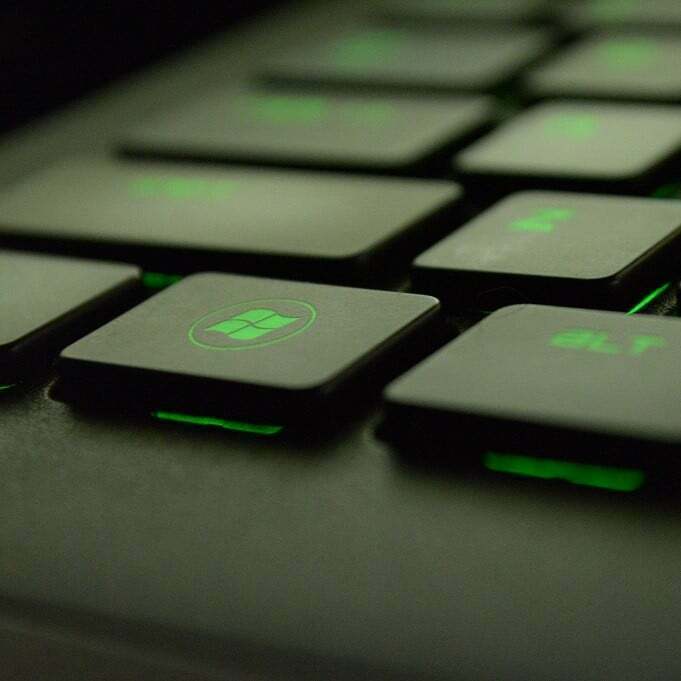
How to Keep Your Windows System Running Smoothly
In the fast-paced digital age we live in, our computers have become indispensable tools, powering everything from work to leisure. Yet, over time, the nimbleness of your once-speedy Windows machine can gradually wane, leaving you with frustration rather than efficiency. The good news is that you don’t need to purchase a brand-new computer to rejuvenate your computing experience. Instead, with the right tweaks and strategies, you can unleash the hidden potential of your Windows PC and have it running smoother and faster than you ever thought possible.
In this comprehensive guide, we will take you on a journey through a multitude of techniques and best practices that will help you optimize your Windows computer. Whether you’re a seasoned tech enthusiast or a novice user, you’ll find valuable tips and tricks to ensure your system’s performance is finely tuned for your specific needs.
From simple software adjustments to hardware upgrades, we will cover it all. By the time you’ve reached the end of this post, you’ll be equipped with the knowledge and tools to transform your Windows PC into a high-performance machine. So, let’s embark on this optimization adventure and rejuvenate your computing experience, making your computer as efficient as the day you brought it home.
Regularly Update Windows: Keeping your operating system up to date is crucial for optimal performance and security. Microsoft releases updates that address bugs, vulnerabilities, and provide performance enhancements.
Update Device Drivers: Ensure that your hardware drivers, such as graphics, sound, and network drivers, are up to date. Outdated drivers can lead to performance issues and compatibility problems.
Uninstall Unnecessary Software: Go through your installed programs and remove software you no longer need. This frees up disk space and reduces background processes, potentially speeding up your computer.
Enable TRIM for SSDs: If you have a solid-state drive (SSD), make sure TRIM is enabled. TRIM helps maintain the performance of your SSD by cleaning up unused data.
Adjust Power Settings: Tweaking your power settings can impact performance. You can set your computer to a high-performance mode for better speed, but this may reduce battery life on laptops.
Clean Up Temporary Files: Use the built-in Disk Cleanup tool to remove temporary files, system files, and other unnecessary data from your hard drive.
Manage Startup Programs: Review the list of programs that start automatically when your computer boots up. Disable unnecessary startup programs to improve boot times.
Defragment Your Hard Drive: On older hard drives (HDDs), defragmenting can help organize data for faster access. However, this is less relevant for modern SSDs.
Utilize Windows Storage Spaces: If you have multiple hard drives or SSDs, consider using Windows Storage Spaces to pool and manage your storage efficiently.
Clear Browser Cache: Regularly clear your web browser’s cache, cookies, and history. This can help improve browser performance.
Monitor Resource Usage: Use Task Manager to keep an eye on CPU, memory, and disk usage. Identifying resource-hungry applications can help you make informed decisions about which ones to close or optimize.
Run Antivirus and Antimalware Scans: Regularly scan your system for malware and viruses. These can slow down your computer and compromise security.
Adjust Visual Effects: You can customize the visual effects in Windows to improve performance. Go to Control Panel > System > Advanced system settings > Performance > Settings, and select “Adjust for best performance” or manually choose which effects to disable.
Add More RAM: If your computer is running slowly and you have available slots, consider upgrading your RAM. This can significantly boost performance, especially for multitasking.
Optimize Virtual Memory: Adjust your computer’s virtual memory settings to ensure it’s appropriately managed by Windows. This can help prevent memory-related performance issues.
Upgrade Your Hardware: If your computer is still sluggish after trying software optimizations, consider upgrading hardware components, such as your CPU, GPU, or storage devices.
Backup and Restore Point Management: Regularly create backup and system restore points so that you can recover your system to a previous state if needed.
Properly Shut Down Your Computer: Shutting down your computer properly instead of just putting it to sleep can help prevent performance issues in the long run.
Conclusion
In the realm of technology, change is inevitable. The once lightning-fast computer that graced your desk can gradually lose its luster, but as you’ve learned in this guide, it doesn’t have to stay that way. By delving into the world of Windows optimization, you’ve unlocked the power to breathe new life into your machine and ensure it operates at its peak potential.
As you bid farewell to this guide, armed with the knowledge and techniques shared within, remember that the journey towards a faster, more efficient Windows computer is an ongoing one. Regular maintenance, updates, and a mindful approach to your digital habits will continue to be your allies in this endeavor.
Your Windows PC is not just a tool; it’s a canvas for productivity, creativity, and exploration. By taking the time to optimize it, you’re investing in a smoother, more enjoyable computing experience. Say goodbye to lag, freezes, and frustration, and embrace the swift, responsive, and reliable companion your Windows computer can be.
Now, go forth and put your newfound knowledge to work. Whether you’re a professional maximizing your productivity or a gamer seeking a seamless experience, your optimized Windows PC will be your trusted sidekick on this digital journey. The possibilities are endless, and it all starts with the click of a mouse and the stroke of a keyboard.
Optimize your Windows computer today and let your digital world flourish as you experience it in its full glory.
Happy Computing Folks!
If you want to keep up to date with our latest posts, or you just want to say hi, why not follow us on Twitter/X
If you want to show your support, why not browse through our Products page and see if there is anything you need. Meganano receives a small profit from each sale made via our affiliate links.



